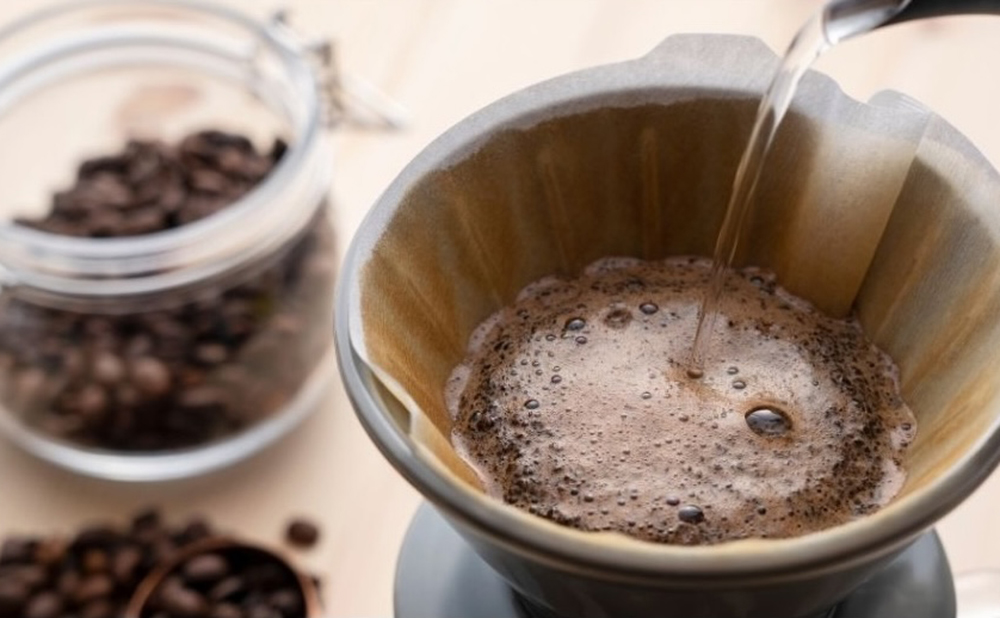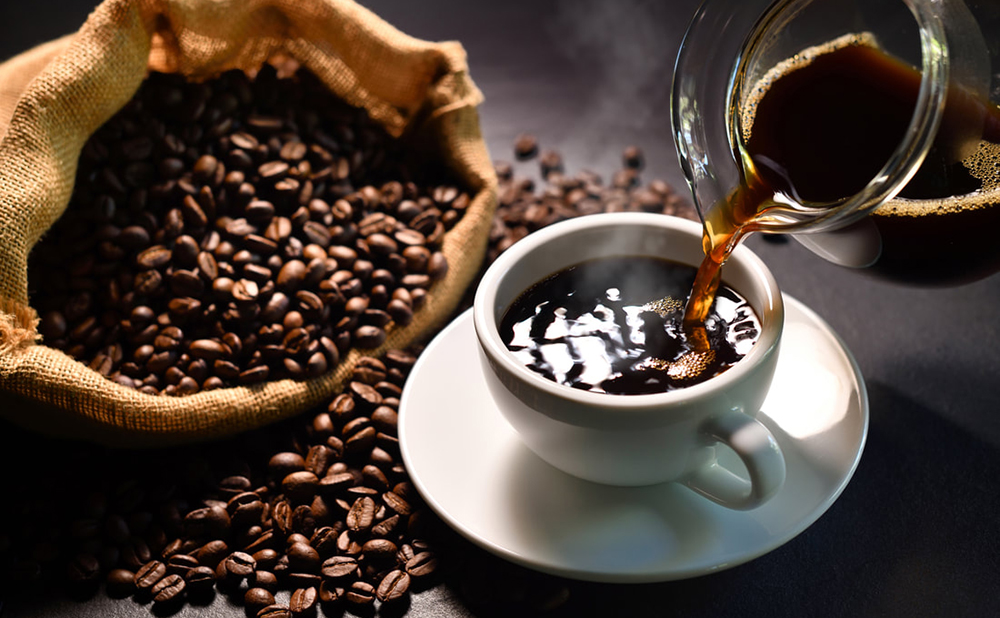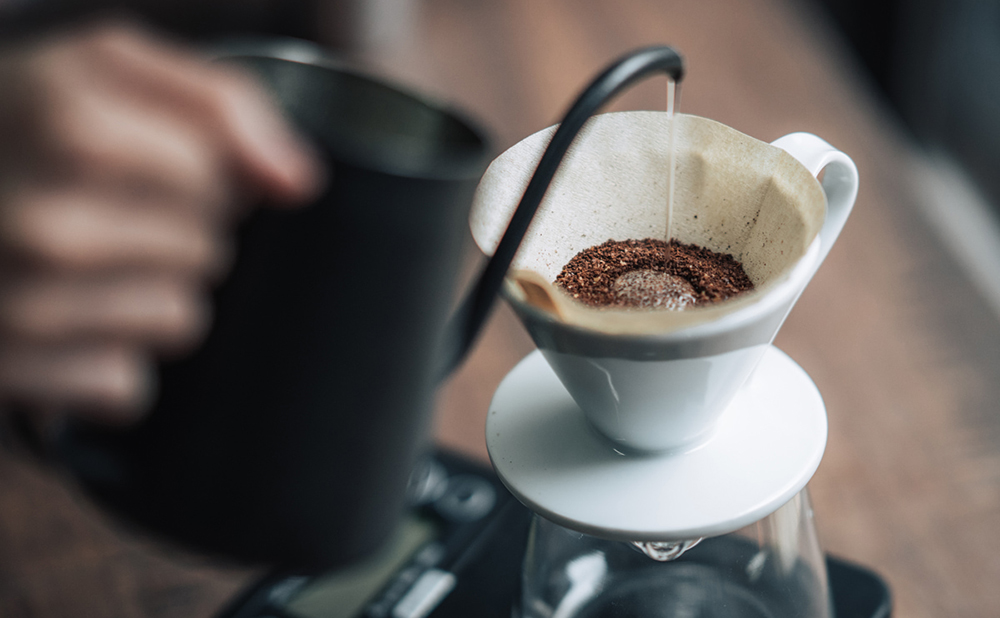With hand drip coffee, even a small change in how you pour can make a big difference in taste and aroma.
If you pour all the way to the edge of the dripper, only water may pass through and the flavor will be weak; if you keep pouring only near the center, the grounds won’t be thoroughly agitated and extraction will be limited. Since there are many different opinions circulating, you might feel confused.
In this article, I’ll show what actual flavor differences result from these pouring methods and share simple tips that can dramatically improve the taste.
The same beans can taste completely different, so enjoy finding the extraction that suits your taste!
Rinse the Paper Filter

First, rinse the paper filter that you set in the dripper.
Pour water of about 90–95°C over the entire filter, making sure the bottom is thoroughly wetted.
Just by doing this step you get the following benefits:
- Removes paper odor (pulp smell) — coffee will have a cleaner, purer aroma.
- Warms the dripper and server — prevents flavor fluctuations due to temperature drops.
- Stabilizes the flow during extraction — the water flow and extraction become more uniform.
For hand drip, where delicate flavors are desired, rinsing is essential to maintain flavor consistency.
Brew Coffee with the Ideal Extraction Method

In hand drip, details such as water temperature, pour position, number of pours, and volume change depending on what kind of flavor you want to produce.
Here is the classic, well-balanced extraction method I recommend.
Water Temperature
If in doubt, water at 92–93°C is the most balanced temperature for brewing coffee.
From there, adjust by ±2–3°C according to roast level and personal preference.
- High (94–96°C) — recommended for light roasts. Brings out body, bitterness, and toasty notes.
- Medium (90–93°C) — recommended for medium roasts. Good balance of sweetness, acidity, and body.
- Low (85–89°C) — recommended for dark roasts. Produces a softer cup with pronounced acidity and sweetness.
By the way, letting boiling water (100°C) sit for 30–60 seconds will bring it to roughly 92–93°C.
Where to Pour
This is a complex area with no single correct answer, but the basic principle is to extract evenly from the entire bed of grounds.
For example, if you keep pouring only over the center of the grounds, the center becomes overextracted and develops unpleasant bitterness and off-flavors, while the edges that the water doesn’t reach remain underextracted and taste thin and lacking in sweetness.
As a result, you might end up with coffee that is weak and lacking sweetness but with excessive bitterness and off-flavors — not very pleasant.
Some people deliberately control this to achieve a particular extraction, but for most people it’s difficult, so it’s recommended to pour not at the center or the edge, but in a circular motion from the center area to cover the whole bed.
Number of Pours
The number of pours can affect the balance of flavor if it’s too many or too few.
Generally, three pours is the basic approach, and four pours is said to produce the most stable flavor for those who are used to it.
- 3 pours — for beginners. Balanced and tends to produce a stable flavor.
- 4 pours — for intermediate brewers. Allows finer adjustment of sweetness and body; more careful.
- 5 pours — for advanced brewers. Can precisely adjust acidity, sweetness, and bitterness.
After drinking many times, you’ll find the “golden number of pours” that suits your beans and taste.
Volume per Pour
The amount will vary depending on the number of pours, but you don’t need to be overly precise here.
Below are common purposes and effects for each pour.
- 1st pour (bloom) — to release gas and preheat. Around 30ml.
- 2nd pour (early extraction) — extracts flavors and acidity easily. About 60–80ml.
- 3rd pour (mid extraction) — extracts sweetness and body. About 60–80ml.
- 4th pour (late extraction) — extracts bitterness and off-flavors more readily. Around 50ml.
The trick is to pour slowly, spending at least 30 seconds on each stage and finishing extraction in about 2 minutes 30 seconds to 3 minutes total.
Design Your Flavor with Your Preferred Pouring Method

The water you pour is like a brush for designing flavor.
Creating the flavor you like is what makes the perfect coffee for you.
For example, pouring from a higher height increases body and bitterness, while pouring from a lower height produces a cleaner, smoother cup.
Pouring continuously without pauses yields a lighter flavor, whereas leaving gaps between pours results in a richer cup.
Enjoying those subtle variations is part of the depth of coffee.
Try different patterns and have fun shaping the taste to your liking!

